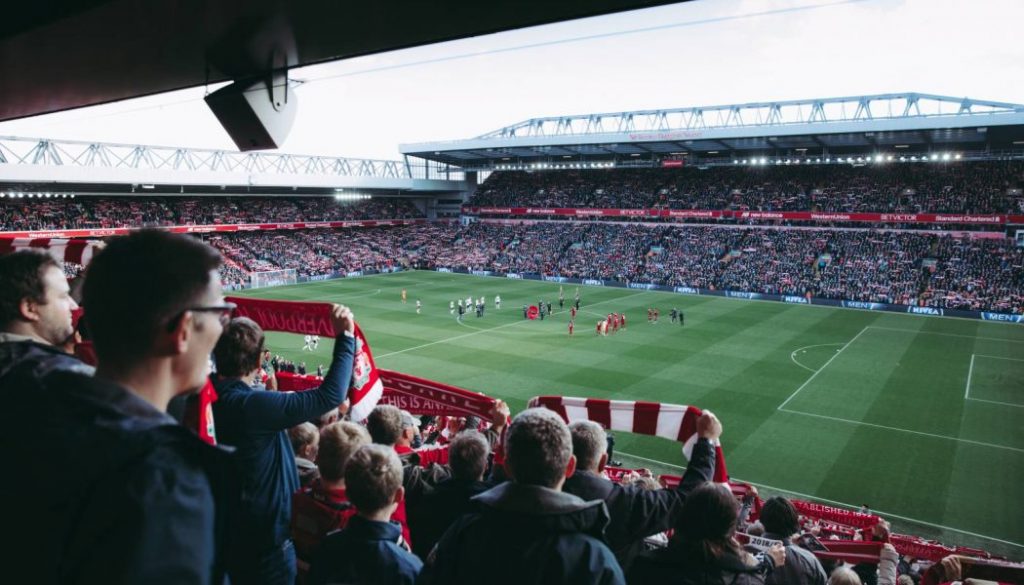Member Insights: Technology Must Lead From The Front As Live Sport Makes Its Comeback
July 1, 2020
As the UK government continues plan for a schedule which will see fans returning, socially distanced, to sports events from the first of October, Restrata’s Botan Osman looks at the necessity for sport to utilise technology in its efforts to resume in front of crowds.
There are few things in the world like sport to bring people together. In an often-fractured world, sport has the power to transcend boundaries, heal wounds and act as a glue for society. In this Covid era, and at a time when people are talking about the power of community more than they have for many years, it is no wonder that people are looking to sport as a sign of our collective progress in the post-Covid comeback.
Not only do people genuinely yearn to return to sporting stadia to experience the passion and emotion that comes with watching their favourite club or sporting star, live sport is being held up as something of a symbol for the collective confidence of society to return to ‘normal’ in a post-Covid world.
“It is natural, logical even, that given its mass gathering nature, sport is nervous about its comeback during the Covid-19 pandemic”
It is natural, logical even, that given its mass gathering nature, sport is nervous about its comeback during the Covid-19 pandemic – and that is why safety has to be at the forefront of the strategy for the return of live sport because, without the right level of confidence that it is safe to return to the stands, fans and clubs will understandably be hesitant to do so. To alleviate this concern, and to prepare for the broader reopening of stadia and competition for sports fans with social distancing measures in place from 1 October 2020, the UK Government (along with the official guidance it has provided: Elite sport – return to competition: safe return of spectators) has taken steps to provide the reassurance society needs, by announcing a series of pilots for the return of spectators to elite sports events.
Over the coming weeks, once the latest government delay announced today has passed, the UK Government will select the next range of sports and indoor and outdoor spectator environments to test the water, which will be rolled out to prepare for that all-important 1 October resumption of sport.
At the heart of creating a safety-first return to sport has to be technology. The technology sector has to be leading from the front in providing the solutions for sport’s comeback, which is why we recently partnered with the England and Wales Cricket Board (ECB) to deliver Bluetooth tracking technology to keep players, officials, operational staff and media safe – allowing the ECB to track and trace any suspected outbreak of Covid-19 within a match environment – during the current test series between England and the West Indies.
This technology has allowed for a nimble and quick-footed approach, whereby, instead of saying someone’s infected and we now have to test or isolate 450 people, we are able to isolate it to the handful of people we know they have had contact with in that last period. The approach that we trialed with the ECB contributed to the UK Government’s safety-first strategy for live sport to return, was adapted to meet the changing needs and regulatory requirements posed by Covid-19 and, above all, played its part in helping society emerge from this most global of pandemics. As the UK Government guidance insists, businesses have a duty of care to the safety of their people as venues re-open throughout the process [of live sport returning]: sport with no fans; sport with some fans; and the business-as-usual sport with all fans.
“We believe that digital solutions to enable management will be far more transparent and effective at not only making today’s guidelines possible, but improving continuously towards achieving any future changes”
Supporting stadia and sporting bodies in the technology required to achieve adherence to UK Government operating standards has been a valuable exercise which has allowed us to focus in on where the technology is an effective enabler to support venue management with the safe return of spectators to sport.
This new world we have entered, where events or stadia are required to be Covid-19 secure, brings with it new safety concerns and sensitivities. These new realities bring forth significant challenges which the whole world is seeking to overcome, and so the approach needs to be both designed and delivered through partnerships with key stakeholders from both public and private sectors.
The post-Covid world will be defined by those individuals and companies that diversified their services and that adopted a forward-thinking approach, deploying solutions that manage today’s crisis, provide confidence to the public and build a digital advantage as we navigate the unknown.
“If Covid has taught us anything, it is that with challenge comes opportunity”
As we look ahead, we believe that digital solutions to enable management will be far more transparent and effective at not only making today’s guidelines possible, but improving continuously towards achieving any future changes that may come. Looking ahead, we believe that the full return of fans will clearly happen, but in stages, and at every stage, evidence of compliance, performance and impact will set the foundation before sport can advance to the next level of its comeback.
The pandemic has had a devastating impact on sport. It has placed huge pressure on stadia, clubs, event organisers and others, but we all want to see sport back – and, above all, back safely. After all, if Covid has taught us anything, it is that with challenge comes opportunity and that is why the technology sector must put its energies into helping sport & other sectors return. And to help fans get back to doing what they love: watching sport in a safe environment.



